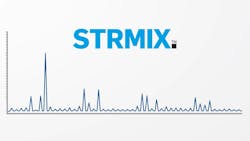STRmix version 2.11 features enhancements to memory use, general improvements to the models and Model maker, and the inclusion of an upper bound to the HPD likelihood ratio (LR). Its most significant change, however, is the addition of Amelogenin into the deconvolution and LR.
The new features in STRmix v2.11 were made primarily in response to recommendations made by the forensic laboratories currently using the software, allowing them to better address on-the-job needs they regularly encounter.
Unlike previous methods of DNA analysis, which depended entirely on the application of fixed stochastic thresholds and other biological parameters to manually analyze DNA samples, STRmix assesses how closely a multitude of potential DNA profiles resemble or can explain an observed DNA mixture.
Relying on proven methodologies routinely used in computational biology, physics, engineering, and weather prediction, STRmix calculates the probability of observed DNA evidence by assuming the DNA originated from either a person of interest or an unknown donor. These two probabilities are then presented as a LR, which infers the value of the findings and the level of support for one proposition over the other.
The success of that methodology in resolving DNA profiles previously considered too complex to interpret has led to the adoption and use of STRmix by 106 forensic organizations around the world, including 80 local, state, and federal agencies in the U.S. Since its introduction in 2012, STRmix has been used to interpret DNA evidence in more than 380,000 cases worldwide.
